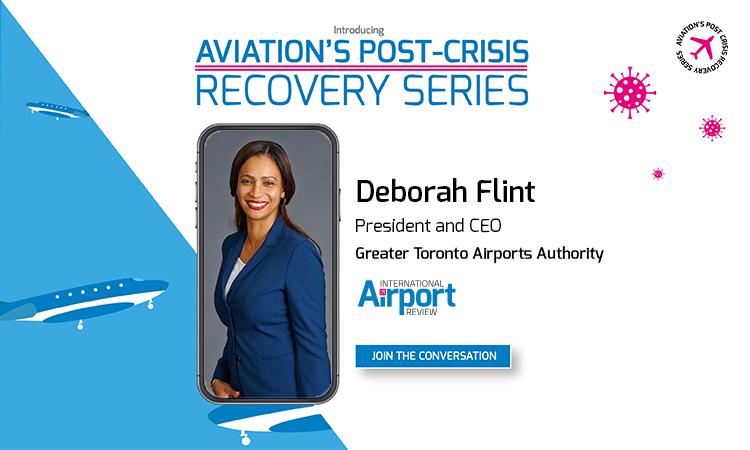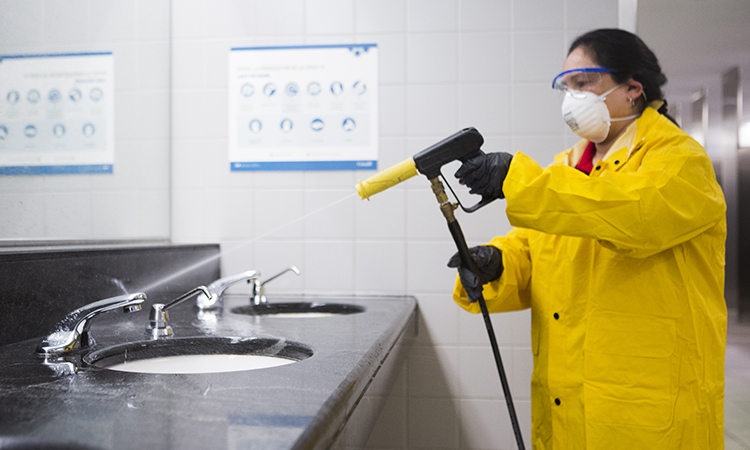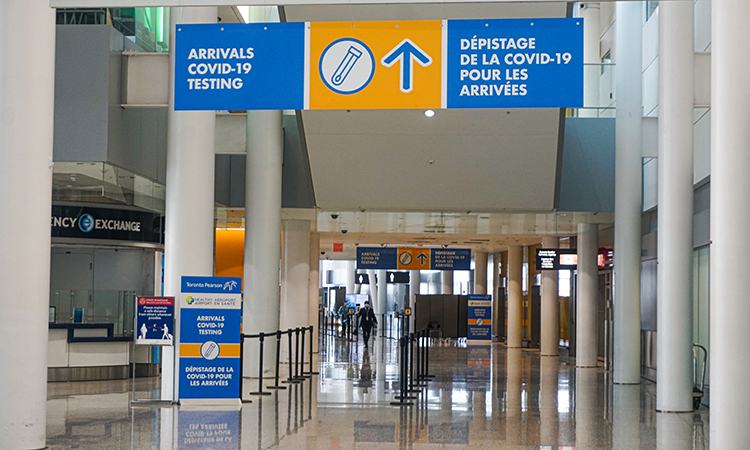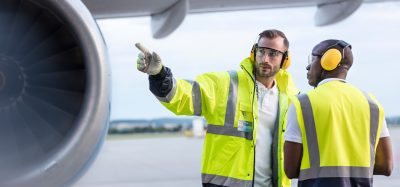Aviation’s Post-Crisis Recovery Series: Toronto Pearson Airport
- Like
- Digg
- Del
- Tumblr
- VKontakte
- Buffer
- Love This
- Odnoklassniki
- Meneame
- Blogger
- Amazon
- Yahoo Mail
- Gmail
- AOL
- Newsvine
- HackerNews
- Evernote
- MySpace
- Mail.ru
- Viadeo
- Line
- Comments
- Yummly
- SMS
- Viber
- Telegram
- Subscribe
- Skype
- Facebook Messenger
- Kakao
- LiveJournal
- Yammer
- Edgar
- Fintel
- Mix
- Instapaper
- Copy Link
Posted: 4 June 2021 | Deborah Flint | No comments yet
In the latest instalment of International Airport Review’s exclusive series, President and CEO of the Greater Toronto Airports Authority, Deborah Flint, writes of the multifaceted changes that Toronto Pearson Airport has made as a result of the coronavirus pandemic and explains how many of these will remain crucial to the industry’s recovery, even in the post-COVID-19 world.


The COVID-19 pandemic has been completely unprecedented in its impact on the aviation industry. How has it impacted Toronto Pearson Airport?
As one of the top internationally connected airports, we’re part of a global aviation sector whose fundamental service – connectivity – depends on airports around the world operating in concert. The downturn caused by the pandemic magnified this interdependence, and the impact on our organisation was devastating.
Overall, we saw a 74 per cent decrease in passenger numbers compared to 2019, with an average drop in flights from approximately 1,300 to 350 per day.
The most difficult decision by far was restructuring our organisation and reducing our workforce by 27 per cent”
This meant that 2020 was a year of difficult choices. After a decade of considerable average annual growth at Toronto Pearson International Airport (YYZ), and an intention to start investing in capital projects to support that growth, we had to postpone investments in terminal infrastructure, in transit, in processing enhancements and more.
But the most difficult decision by far was restructuring our organisation and reducing our workforce by 27 per cent. The impact on jobs is mirrored in the Airport Employment Zone surrounding Toronto Pearson, which is Canada’s second largest employment cluster and is heavily reliant on the airport for business.
What immediate changes did you have to make in response to the pandemic, and what did you find the hardest problem to tackle?
At the outset, with public health as our first priority, we quickly implemented a range of health and hygiene measures, ranging from being one of the first workplaces in Canada to require mandatory masks for both employees and the public, to deploying new technologies to support a hygienic environment.
We also leaned heavily into innovation. Whether that’s autonomous robot floor cleaners and Bluetooth-enabled elevators, or Ultraviolet light to kill pathogens on floors, escalators, moving walkways and in our air handling systems, we’ve deployed dozens of tools that keep passengers and employees safe while travelling through Toronto Pearson.
The biggest obstacle continues to be a nationally consistent and globally aligned testing protocol. We believe that the experience for travellers must be the same, regardless of which Canadian airport they arrive at, and compatible with our global counterparts.


Credit: Toronto Pearson International Airport
What initiatives are you focusing on during 2021 to rebuild passenger confidence?
Since the pandemic began, our Healthy Airport programme continues to expand as we take a proactive, multi-layered, science-based approach to the pandemic. This includes partnering with companies such as Dexterra, CleanSlate and BlueDot to introduce innovative and technologically advanced solutions to ensure the safety of our passengers and employees.
We’ve also introduced and expanded our COVID-19 testing options. We are delivering workplace antigen testing to hundreds of employees. Each employee is tested two to three times per week. This programme is proving the value in workplace testing and providing for the early identification and prevention of spreading the virus. We also provide antigen tests for departing passengers that are destined for the U.S. or Germany as part of a study. Most recently, we added Health Canada-approved, high volume lab-based quality Rapid PCR testing for employees and passengers.
These efforts towards creating our Healthy Airport programme were recognised by Airports Council International (ACI), as we won the “Best hygiene measures in North America” award. This is a new award category in their annual Airport Service Quality (ASQ) programme, which was introduced as a result of the COVID-19 pandemic.


Credit: Toronto Pearson International Airport
What other exciting projects/developments are in the pipeline at Toronto Pearson Airport to help cope with increased passenger numbers once air travel begins to pick-up again?
At the end of April 2021, we introduced a new COVID-19 rapid polymerase chain reaction (PCR) and antigen testing research programme at Toronto Pearson. This programme is being funded by the National Research Council of Canada. It was designed to look at the efficacy of antigen testing, compared with rapid PCR testing, in a high-throughput, commercial environment, as well as the operationalisation of rapid PCR testing in an airport environment.
At the end of April 2021, we introduced a new COVID-19 rapid polymerase chain reaction (PCR) and antigen testing research programme at Toronto Pearson”
Clinical analysis of test swabs take place on-site at the airport, using the rapid PCR test, with results provided to the participant within two hours. Participants will also be tested using rapid antigen tests for research. The study will make free COVID-19 tests available to employees, as well as passengers who are willing to volunteer as participants.
For airport workers, many of whom live in communities adjacent to the airport, taking part in this research will help to identify, trace and isolate COVID-19 at work and at home in the communities that surround the airport. We believe that testing practices will need to be in place for the foreseeable future, and the ability to meter them up and down will be required on a permanent basis.
Are there any initiatives that you have implemented during the COVID-19 pandemic that you will permanently integrate into your airport’s strategy, even once the crisis has passed?
As you would expect, public expectations of air travel may be forever changed, much as they were post-9/11 in relation to security and the need for increased screening standards. There is no doubt that our industry will rise to this challenge and create new, harmonised healthy travel measures that will make passengers feel more comfortable about travel when governments start lifting restrictions.
There is no doubt that our industry will rise to this challenge and create new, harmonised healthy travel measures that will make passengers feel more comfortable about travel”
This will include a passenger flow that provides for a lower touch, faster border clearance process for arriving passengers, which is aided by digital verification to confirm the health credentials of the passenger. We are also examining identification systems to provide low contact check-in and boarding processes, as well as increased accessibility for passengers with disabilities. As well, we are pursuing terminal modifications in Terminal 3 to enhance the safety of passengers by ensuring separation between connecting passengers and departing passengers.
Another aspect that we expect to continue is a focus on business diversification. The pandemic forced us to think outside of the box and find new revenue generating opportunities, and we believe that leveraging all of our assets, especially those that are not passenger dependent, will improve our resiliency.
What business activity are you forecasting for Toronto Pearson Airport/ what is your business outlook?
We are confident in the ultimate recovery of our business. Today, however, the aviation industry is facing continued uncertainty, and recovery will depend on the severity of travel restrictions. In Canada, the threat of new variants has increased restrictions that currently has us tracking to our lowest forecast scenario. It will continue to be a volatile time, and I expect that we will end 2021 either trending toward our base case or best base forecast.
The aviation industry is facing continued uncertainty, and recovery will depend on the severity of travel restrictions”
We identified this potential risk as we developed our three-year strategic plan, which was designed to provide Toronto Pearson with the flexibility to continually assess the extent of the crisis, the state of our operating environment and the profile by which our passenger growth will recover. The plan is aligned with current fiscal realities and is laser-focused on the activities that we know are the most critical to our future success.
We see a strong future for passenger travel at Toronto Pearson. Working with economists, industry analysts and our partners, we plan to position Toronto Pearson to be built back better. Using the opportunity of foresight, we will recreate a future-proofed airport – passenger experiences that are biometrically and digitally enhanced; operational efficiency driven by data; advances in biosecurity; and health and hygiene that mitigates infectious disease.
Deborah Flint joined the Greater Toronto Airports Authority (GTAA) as President and Chief Executive Officer in February 2020, following more than four years as CEO of Los Angeles World Airports and 24 years serving in executive roles in the aviation industry.
At the GTAA, Flint began her leadership at the onset of the global pandemic and has led Toronto Pearson to being globally recognised and awarded for its Healthy Airport programme. She has developed a new Strategic Plan for the GTAA that is framed by the North Star Statement: “Pearson Strong: Creating the Airport of the Future by building our business in a Smart, Healthy, and Profitable Way.”
Related topics
Aeronautical revenue, Airport crisis management, Airside operations, Aviation's Post-Crisis Recovery Series, Biometrics, COVID-19, New technologies, Passenger experience and seamless travel, Passenger volumes, Safety, Terminal operations, Workforce
Related airports
Related organisations
Airports Council International (ACI World), Greater Toronto Airports Authority (GTAA), Health Canada, National Research Council of Canada


















